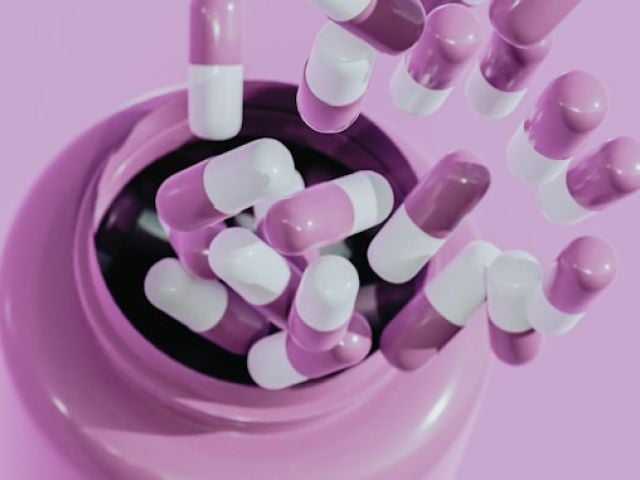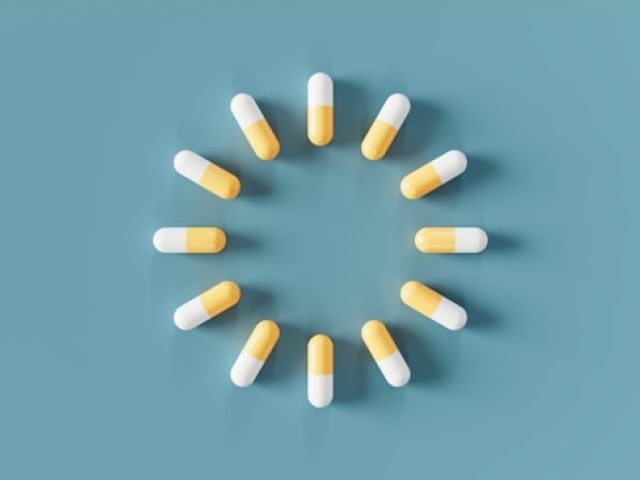
Niacin Dosage Guide: Optimal Amounts, Timing and Safety
Niacin, also known as vitamin B3 or nicotinic acid, supports energy metabolism and cellular health. While this important vitamin offers valuable benefits, getting the dosage right is important for both safety and effectiveness.
Understanding proper niacin dosage becomes especially important when you consider its complex effects on the body. Too little won’t provide therapeutic benefits, while too much can cause serious adverse effects.
Key Takeaways
- Adults need only 14-16 mg daily, while therapeutic doses range between 1,500-3,000 mg
- Above 35 mg daily can cause flushing, liver damage, and blood sugar problems
- Niacin may raise NAD+ beyond optimal ranges, requiring testing to avoid side effects
- Studies show niacin may increase stroke risk despite improving cholesterol
Recommended Daily Amounts for Niacin (Vitamin B3)

The basic nutritional requirements for niacin vary depending on your age, sex, and life stage. These amounts ensure you meet your body’s basic needs for this important vitamin.
Adults need different amounts based on their circumstances:
- Men: 16 mg per day
- Women: 14 mg per day
- Pregnant women: 18 mg per day
- Breastfeeding women: 17 mg per day
Children have lower requirements that increase with age. Infants need only 2-4 mg daily, while teenagers require up to 12 mg per day.
Most people can easily meet these recommended dietary allowances through food sources. However, therapeutic uses require much higher doses1.
Therapeutic Niacin Dosages
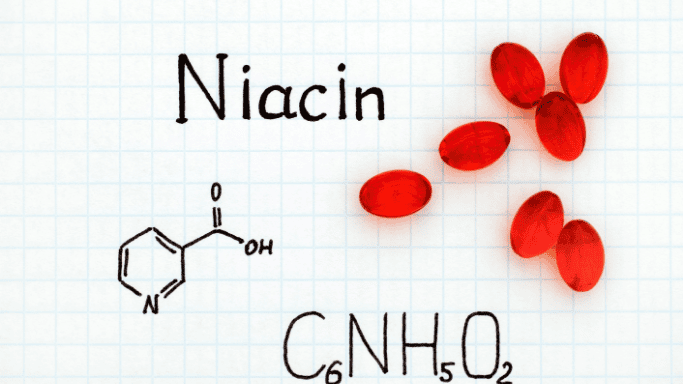
Doctors sometimes prescribe niacin to treat high cholesterol or other cardiovascular conditions. In these cases, the dosage requirements jump dramatically above basic nutritional needs.
The standard therapeutic range varies from 1,500 to 3,000 mg per day. This represents a 100-fold increase over basic nutritional requirements.
Starting Protocol for Taking Niacin Supplements
Healthcare providers typically begin with conservative dosing to minimize side effects. The standard approach involves2:
- Starting dose: 250 mg at bedtime
- Increase by 250 mg every 4-7 days
- Target: 2,000 mg per day initially
- Maximum: Up to 6,000 mg per day (rarely needed)
This gradual escalation helps your body adjust to higher doses of niacin while reducing the risk of uncomfortable flushing reactions.
Maintenance Niacin Dosage
Most patients achieve the best lipid benefits at maintenance doses between 1,000-2,000 mg daily. Research shows that 1 gram per day produces modest HDL cholesterol increases, while 2 grams per day delivers substantial LDL cholesterol reduction of approximately 25%3.
The key is finding the lowest effective dose that provides the desired cardiovascular benefits while minimizing adverse effects.
Optimal Niacin Dose Timing and Administration

When and how you take niacin impacts both its effectiveness and the severity of side effects you might experience.
Best Times to Take Niacin
Extended-release niacin works best when taken once daily at bedtime after a low-fat snack. This timing strategy helps minimize the notorious niacin flush while maintaining therapeutic effectiveness.
Immediate-release formulations require different timing, typically taken 2-3 times daily with meals.
Food Interactions and Dietary Considerations
Taking niacin with food dramatically reduces side effects, particularly flushing and stomach upset. A low-fat snack proves best because high-fat meals can interfere with absorption of extended-release formulations.
Foods and substances to avoid near dosing time:
- Alcohol
- Hot beverages
- Spicy foods
- Large, fatty meals
These items can intensify flushing reactions and make the experience more uncomfortable.
Understanding Niacin Formulations
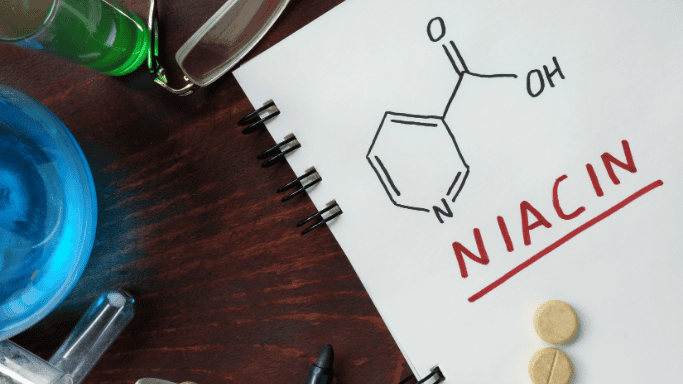
Not all niacin supplements are created equal. The different formulations have distinct safety profiles and effectiveness levels.
| Formulation Type | Flushing Rate | Liver Risk | Recommended Use |
|---|---|---|---|
| Immediate-Release | Nearly 100% | Lowest | Safest option |
| Extended-Release | 50-70% | Moderate | Most prescribed |
| Sustained-Release | Variable | Highest | Avoid completely |
Sustained-release formulations should be avoided entirely due to greatly increased liver toxicity risk. Studies show 52% of patients develop liver problems with sustained-release niacin compared to 0% with immediate-release forms4.
Safety Considerations and Niacin Adverse Effects

Understanding niacin’s safety profile helps you make informed decisions about supplementation and recognize when doses might be too high.
Tolerable Upper Intake Levels
For healthy adults, the Tolerable Upper Intake Level stands at 35 mg per day. This represents the maximum daily intake unlikely to cause adverse health effects from dietary sources.
Above this level, flushing reactions become increasingly common and uncomfortable.
Managing Niacin Flush
The common niacin flush typically occurs within 30 minutes of taking the supplement and lasts about 60 minutes. While harmless, this reaction causes many people to discontinue treatment.
Effective strategies to reduce flushing include:
- Taking 325 mg aspirin 30 minutes before niacin
- Starting with low doses and increasing slowly
- Taking niacin with food or a light snack
- Eating an apple before dosing (pectin may help reduce flushing)
Serious Adverse Effects from High Doses
High-dose niacin therapy (above 2-3 grams daily) can cause serious health problems that require medical monitoring.
Potential complications include:
- Liver damage with potential liver failure
- Blood sugar problems and glucose intolerance
- Elevated uric acid levels leading to gout attacks
- Increased bleeding risk due to reduced platelet function
- Vision problems including macular edema
These risks underscore why therapeutic doses should only be used under medical supervision.
The Hidden Risk: Niacin May Raise NAD+ Levels Too High
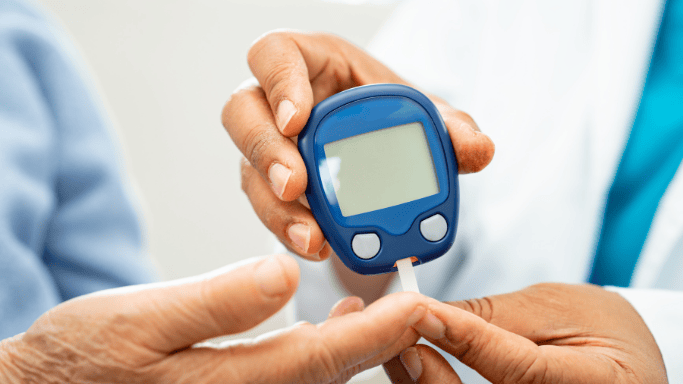
Here’s something most people don’t know about high-dose niacin supplementation. While niacin can boost NAD+ levels, it may actually raise them beyond the healthy range.
This creates a concerning situation where more isn’t necessarily better. Excessive NAD+ levels can disrupt cellular processes and cause unexpected health issues.
Why Testing Your NAD+ Matters
Unlike basic nutritional uses, taking niacin to boost NAD+ requires precise monitoring. Your body’s response to niacin varies dramatically based on genetics, metabolism, and other factors.
Some people achieve the best NAD+ levels with modest niacin doses, while others see levels spike dangerously high. Without testing, you’re essentially flying blind.
Our Intracellular NAD® Test provides the precise measurements needed to improve your approach safely and effectively.
Recent Research Findings Challenge Niacin’s Heart Benefits

New research has dramatically shifted our understanding of niacin’s role in cardiovascular health, revealing some concerning findings.
Cardiovascular Efficacy Questions
Large-scale trials including AIM-HIGH and HPS2-THRIVE showed that niacin therapy doesn’t reduce cardiovascular events despite improving cholesterol numbers. Even more concerning, the HPS2-THRIVE study found niacin increased stroke risk by 78%5 6.
The 4PY Discovery
Groundbreaking 2024 research from Cleveland Clinic uncovered why niacin often fails despite improving cholesterol profiles. When your body breaks down excess niacin, it produces a metabolite called 4PY that triggers vascular inflammation7.
Approximately 25% of Americans have excess niacin levels that double their cardiovascular disease risk. This discovery helps explain the disconnect between improved cholesterol numbers and unchanged heart disease outcomes.
Dietary vs Supplemental Niacin
Interestingly, dietary niacin intake shows protective cardiovascular effects in population studies. Higher dietary intake correlates with lower mortality risk, with the best intake appearing around 22-25 mg per day from food sources.
This suggests getting niacin from NAD+ foods rather than high-dose supplements may offer better long-term benefits.
Current Medical Recommendations

Most cardiovascular specialists no longer recommend niacin as first-line therapy for treating high cholesterol. Statins and other medications are preferred due to superior safety profiles and proven cardiovascular benefits.
For patients who do use therapeutic doses, careful monitoring becomes important:
- Baseline and periodic liver function tests
- Blood glucose monitoring, especially for diabetic patients
- Platelet counts and bleeding assessments
- Patient education about flushing and warning signs
Testing: The Key to Safe NAD+ Boosting
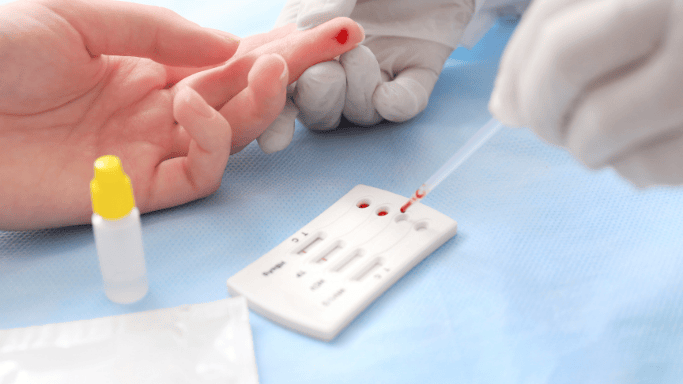
If you’re considering niacin for NAD+ benefits rather than cholesterol management, testing becomes absolutely important for safety and effectiveness.
Our precision approach involves:
Initial Assessment:
- Complete AgingSOS® biomarker testing to establish baseline health markers
- Intracellular NAD+ measurement to determine current levels
- Personalized dosing recommendations based on your unique biology
Ongoing Monitoring:
- Follow-up testing at 2-4 weeks to assess response
- Dose adjustments based on results
- Periodic monitoring to maintain the right levels safely
This data-driven approach helps you achieve the benefits of improved NAD+ levels while avoiding the pitfalls of excessive supplementation.
Making Informed Decisions About Nicotinic Acid Supplementation
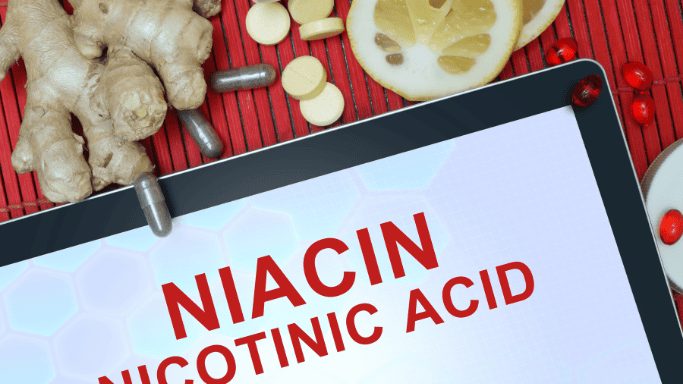
Understanding proper niacin dosage requires balancing potential benefits against real risks. For basic nutritional needs, dietary sources typically provide adequate amounts safely.
For therapeutic uses, medical supervision becomes important due to the noteworthy risk profile at higher doses. Recent research questioning niacin’s cardiovascular benefits makes this supervision even more important.
If you’re interested in NAD+ supplements for longevity purposes, consider safer alternatives like our Vitality↑® NAD+ Booster, which provides effective NAD+ support without the risks associated with high-dose niacin.
Remember, when it comes to niacin and NAD+ boosting, precision testing isn’t just helpful—it’s important for both safety and effectiveness.
Reference Sources:
- https://ods.od.nih.gov/factsheets/Niacin-HealthProfessional/ ↩︎
- https://www.ncbi.nlm.nih.gov/books/NBK541036/ ↩︎
- https://jamanetwork.com/journals/jamainternalmedicine/fullarticle/216937 ↩︎
- https://pubmed.ncbi.nlm.nih.gov/8309029/ ↩︎
- https://pmc.ncbi.nlm.nih.gov/articles/PMC4829575/ ↩︎
- https://www.ncbi.nlm.nih.gov/books/NBK559137/ ↩︎
- https://newsroom.clevelandclinic.org/2024/02/19/cleveland-clinic-led-study-discovers-link-between-high-levels-of-niacin-a-common-b-vitamin-and-heart-disease ↩︎

Get weekly health insights and exclusive offers by joining our newsletter.


